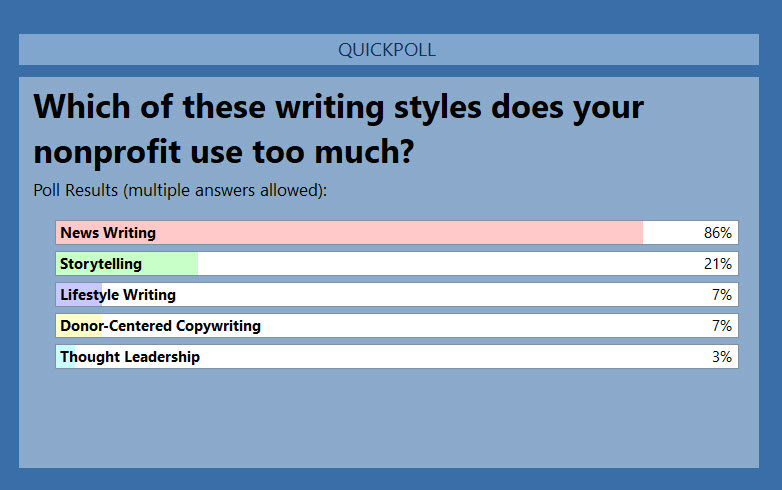My favorite definition of a story comes from The Elements of Persuasion:
“A story is a fact, wrapped in an emotion, that compels us to take an action that transforms our world.”
Richard Maxwell and Robert Dickman
All of the five words I have in bold are essential to nonprofit storytelling success.
Your stories need to be true, or at a minimum, based in fact.
Your stories need an emotional hook that the reader can connect to.
Your stories need to compel people in some way, usually to follow through on your call to action, but at a minimum to remember you and keep reading next time you send them something (otherwise known as brand and reputation building).
Your stories need to help people see how their relationship with and support of your nonprofit transform the world (that’s why nonprofits exist).
If your approach to nonprofit storytelling isn’t doing these things, it’s time to take a closer look at how and why you are telling stories. Otherwise, all of your storytelling may be pointless.
That’s the conclusion reached by a few people who participated in my webinar today on the seven writing styles nonprofits should master.
After listening to me talk about storytelling as one of the seven styles, 21% of participants in the webinar thought their organizations were using stories too much.

When I looked at their comments, it was mostly because (1) the stories didn’t have enough emotion and (2) the connections to compelling actions were too weak.
As a nonprofit communicator, you aren’t telling stories to entertain, nor are you telling stories just to fill up a page. You need to tell the right kinds of stories.
Take a hard look at the stories you are telling. Pick the best ones and write more like those.






